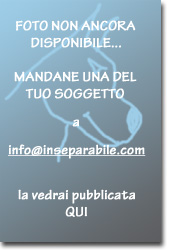Smaalandsstovare or SMÅLANDSSTÖVARE or (Smålandsstövare)

We are collecting the material for being able to realize the card of the Smaalandsstovare
FCI-Standard N°129/ 17.11.1997/ GB
TRANSLATION : Renée Sporre-Willes.
ORIGIN : Sweden.
DATE OF PUBLICATION OF THE ORIGINAL VALID STANDARD : 17/07/1997.
UTILIZATION : Scent hound used for hunting hare and fox. It is not a pack hound and not used for hunting deer.
CLASSIFICATION F.C.I. : Group 6 Scent hounds and related breeds.
Section 1.2 Medium-sized hounds.
With working trial.
SUGGESTED BREEDINGS by MENANDPETS.COM:
No breeding to signal
if you want to know like signaling yours, contacts: marketing@inseparabile.it
BRIEF HISTORICAL SUMMARY : A great variety of scent hounds existed in the county of Småland during the 19Th century. Some, whose ancestry came from German, Polish and Baltic hounds, had accompanied soldiers returning to Småland from the great wars (1611-1718). Those hounds together with local farm dogs of spitz type with an addition of English hounds became the foundation of the Smålandsstövare. Size as well as colour varied, as did the length of tail. Some where black-and-tan, others red or yellow. White markings were common. Some dogs were born with short tails. In the early 20Th century great efforts were made to re-establish the old Smålandsstövare, mainly the bobtailed variety, although the first standard drawn in 1921 allowed both the natural short and long tail. Colour was primarily decided to be black-and-tan but red and yellow was allowed as was white markings. The Smålandsstövare has had continuing additions of new blood, sometimes with strong lines to other breeds. The last time new blood was added was in the 1950’s, when for a short period, dogs of accepted type but with unknown background where registered as Smålandsstövare.
GENERAL APPEARANCE : Robust dog with a somewhat elegant look. It should be strong but not heavy in built. Coat should be harsh.
IMPORTANT PROPORTIONS : Almost square in body. Depth of body should be nearly equal to half of the height at withers.
BEHAVIOUR / TEMPERAMENT : Calm, kind dog with a faithful and keen temperament.
HEAD
CRANIAL REGION :
Skull : Lean and of medium length. Broadest between the ears.
Stop : Stop well defined, distance from occiput to stop should be equal to that from stop to tip of nose.
FACIAL REGION :
Nose : Nose black, with large nostrils.
Muzzle : Muzzle well developed, neither coarse nor snipy. Bridge of nose straight and parallel to line of skull.
Lips : Upper lips only slightly overhanging.
Cheeks : Cheeks lean.
Jaw/Teeth : Scissor bite. Teeth strong and well developed.
Eye : Dark brown with calm expression.
Ear : Set fairly high and slightly raised when the dog is attentive. Slightly shorter than the distance from base of ear to half-way along muzzle. Hanging flat and tips rounded.
NECK : Moderately long, powerful without being coarse, merging beautifully into shoulders. Skin on neck supple and close fitting.
BODY :
Withers : Withers well defined.
Back : Back short and powerful.
Loin : Loin musclar and slightly arched.
Croup : Croup slightly inclined, long and broad.
Chest : Chest well developed with well sprung ribs.
Underline and belly : Belly only slightly tucked up.
TAIL :
- Either long and set on in a straight line with the back. Straight or slightly curved in sabre fashion. Barely reaching hocks. Half length tails also permissible. When the dog moves, tail preferably not carried above the level of the back.
- Naturally born short tail ( stumpy tail ), beartail permissible.
LIMBS
FOREQUARTERS :
General appearance : When viewed from front forelegs appear straight and parallel. Strong bone in harmony with the general appearance of the dog.
Shoulder : Shoulder long, muscular and well laid back. Closely lying.
Upper arm : Upper arm long and forming a right angle to shoulders.
Elbow : Elbow set close to body and not visible under ribcage.
Pastern (Metacarpus) : Springy and forming a slight angle to forearm.
Forefeet : Firm with well knuckled and tight toes.
HINDQUARTERS :
General appearance : Strong and parallel when viewed from GO BACK TO LIST.
Thigh : Muscles well developed and thighs broad when viewed from side.
Stifle : Well angulated.
Hock joint : Well angulated.
Metatarsal : Short, lean and straight.
Hindfeet : Like front feet. Dewclaws undesirable.
GAIT/MOVEMENT : Parallel, strong and long-reaching.
COAT
HAIR : Medium length, harsh, close fitting coat that is coarser on back and neck. Undercoat short, dense and soft. On head, ears and front of legs coat should be short and smooth coach. Under the tail and back of thighs top coat longer than on the back. Coat well developed between toes and pads.
COLOUR : Black-and-tan. Tan, any shade from amber to a warm auburn. Small white markings permissible on chest and toes.
HEIGHT :
Height at withers : Males : 46-54 cm, Ideal size 50 cm.
Females : 42-52 cm, Ideal size 46 cm.
FAULTS : Any departure from the foregoing points should be considered a fault and the seriousness with which the fault should be regarded should be in exact proportion to its degree.
- Wrong proportions, i.e. too rectangular in body.
- Lack of masculinity or femininity.
- Heavy head, broad skull.
- Short or snipey muzzle.
- Pendulous lip corner.
- Overshot or undershot bite, level bite.
- Light eyes.
- Too long in back.
- Short, steep croup.
- Tail carried over level of the back.
- Restricted hind movement.
- Short or thin coat.
- Lack of tan-markings ; black pencilling in the tan.
- Too much white or white in non-permissible areas.
- Liver-and-tan colour.
ELIMINATING FAULTS :
- Aggressive or overly shy.
- Aloofness.
- Pronounced over- or undershot bite.
- Height at withers which is less than or exceeds allowed variations by more than 1 cm.
Any dog clearly showing physical or behavioural abnormalities shall be disqualified.
N.B. : Male animals should have two apparently normal testicles fully descended into the scrotum.